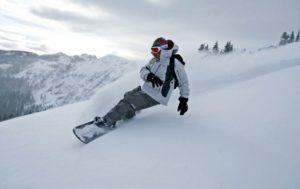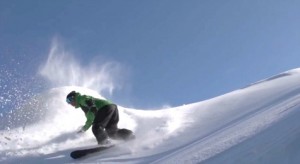So you want to try snowboarding! It’s a great alternative to skiing and can be mastered through lesson programs and the right frame of mind.
However, there are some inherent dangers to snowboarding, especially for beginners.
Dr. Robert Cabry with Drexel Sports Medicine, has some tips for people – young or old – embarking on snowboarding for he first time.
Common Snowboarding injuries
When you snowboard, your feet are fixed into non-release snowboard bindings and the board is narrow, so falls are going to happen, especially for the novice.
The majority of snowboarding injuries involve the upper extremity and ankle, but serious injuries are rare.
The most common injury occurs to the wrist. Th is is because as the boarder loses balance, and the person falls on an outstretched hand. This leads to sprains and even fractures. A better way to fall would be to land on the elbows; they can take more impact than the wrist and hand.
is is because as the boarder loses balance, and the person falls on an outstretched hand. This leads to sprains and even fractures. A better way to fall would be to land on the elbows; they can take more impact than the wrist and hand.
Ankle injuries
After the wrist, ankle injuries are the next most common and usually occur with a crash, especially after a jump which combines impact with a twist. These common injuries occur more often in experienced snowboarders because they take more risk.
The injury rate has decreased with the use of the hard shell boot. Although the ankle injuries are decreased, the stiffer boot can lead to more knee injuries.
The good news is that knee injuries in snowboarders are less common and much less severe than in skiers. The beginner should stick to the softer boot, which will allow for more control of the board.
Preparation a key
Snowboarding is a sport, and like other sports, people need to be prepared and properly conditioned. Snowboarding requires core strength and balance, so it’s important to focus on this when working out at the gym. Leg strength and aerobic conditioning will also reduce the risk of injury.
Before hitting the slopes, warm up those muscles so they will better handle the impact. Although wrist guards might not look cool, they might just save you from serious injury. There are 100,000 wrist fractures a year among snowboarders.
Wear a helmet
Helmets are also critical equipment for the snowboarder. Crashes, collisions and loss of balance can all cause serious head injury. Protect the skull and protect the brain. Wear your helmet at all times when boarding.
Snowboarding is a great winter sport, but it also requires some common sense. Be smart and you will be enjoying yourself on the slopes and not sitting in the lodge depressed due to a swollen ankle or broken wrist.